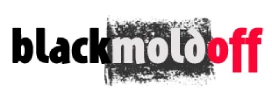The existence of mold in the spaces between walls is a major threat to both the strength of a structure and the wellbeing of people. Even though it is usually not easily noticeable, allowing mold to grow unchecked can have a range of harmful effects and result in serious outcomes.
Health Risks Associated with Mold Exposure
The health effects of mold exposure can vary in intensity and severity for people, depending on how long they have been exposed and their individual health conditions.
- Allergic Reactions: Mold can trigger allergic symptoms such as sneezing, runny nose, red eyes, and skin rash.
- Respiratory Issues: Mold spores have the potential to worsen asthma attacks and lead to various respiratory issues.
- Immune System Suppression: Extended periods of exposure can have the adverse effect of compromising the immune system, making individuals more vulnerable to acquiring infections.
- Toxic Effects: Certain molds produce mycotoxins that can lead to serious health conditions when inhaled, ingested, or come into contact with skin.
Structural Damage Caused by Mold
Mold flourishes in damp settings, and when it is found within walls, it typically suggests an underlying issue with moisture, such as water seepage or condensation. The structural implications include:
- Decay and Deterioration: Mold can feed on and break down organic materials such as wood, contributing to the decay of structural elements.
- Compromised Integrity: Over time, the persistent presence of mold may weaken the stability of the walls, posing a safety risk to occupants.
- Costly Repairs: Addressing mold damage can be expensive, especially if it involves structural repairs or replacement of mold-infested materials.
Prevention and Remediation
To mitigate the risks associated with mold growth within walls, it is essential to take preventive measures and to respond promptly when signs of mold are detected.
- Moisture Control: Maintain low indoor humidity levels (ideally between 30-50%) to reduce the likelihood of mold growth.
- Ventilation: Ensure proper ventilation, particularly in areas prone to moisture, such as bathrooms and kitchens.
- Leak Repairs: Fix leaks and other water problems promptly to prevent the accumulation of moisture.
- Professional Assessment: In case of suspected mold infestation, a professional assessment is necessary to determine the extent of the problem and to develop a remediation strategy.
Conclusion
It is essential to understand the importance of identifying and addressing mold in walls to ensure a safe and healthy living space. Taking prompt action and implementing preventive measures can greatly decrease the potential health hazards and potential damage to the structure of buildings.

